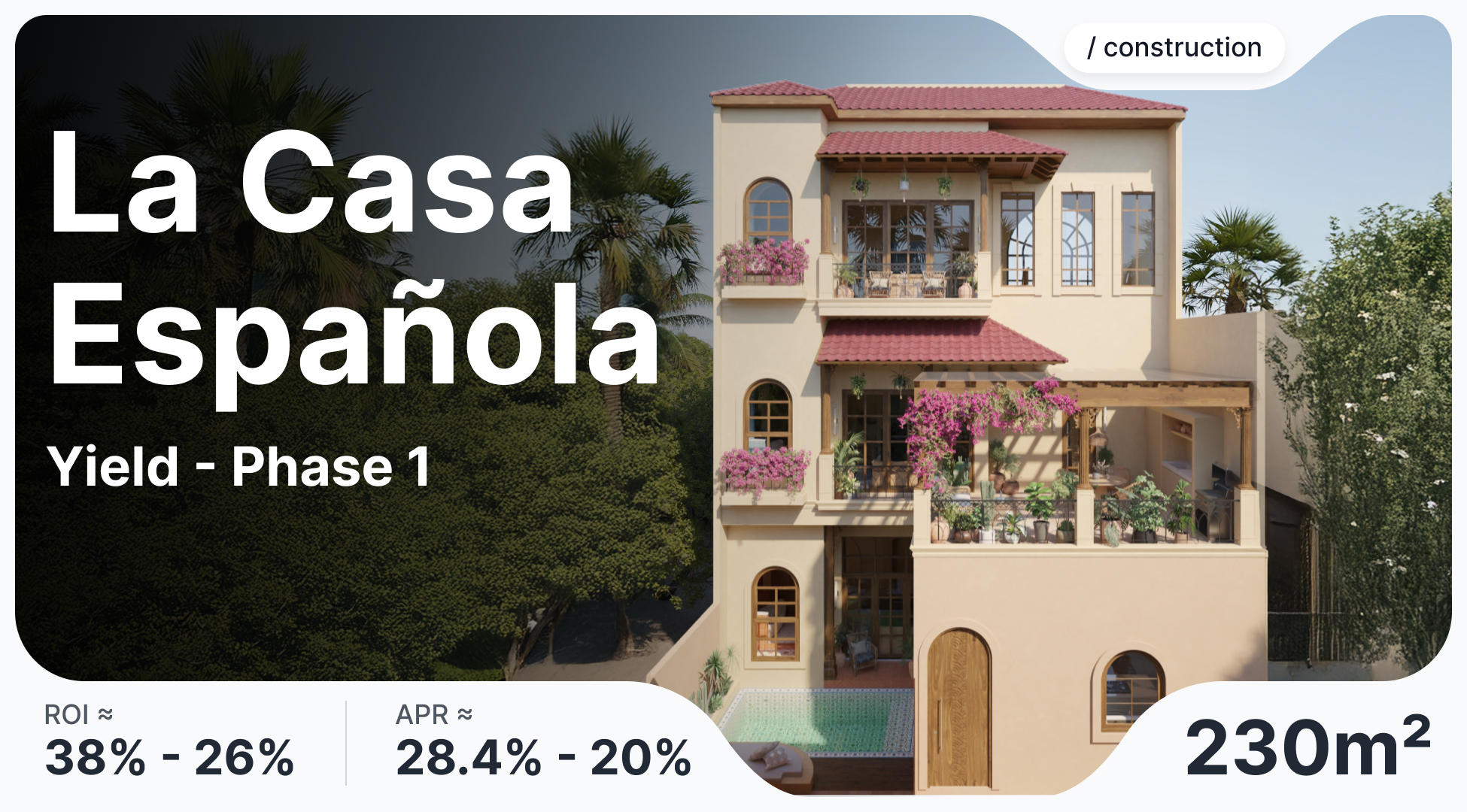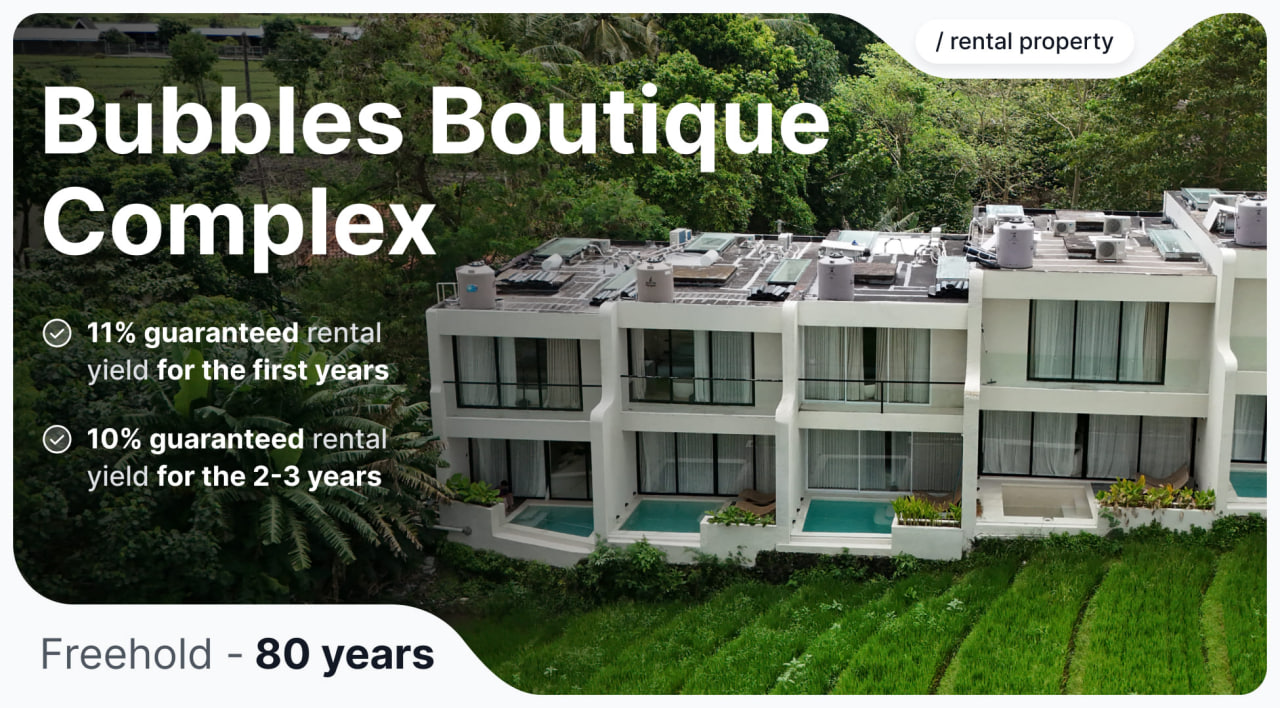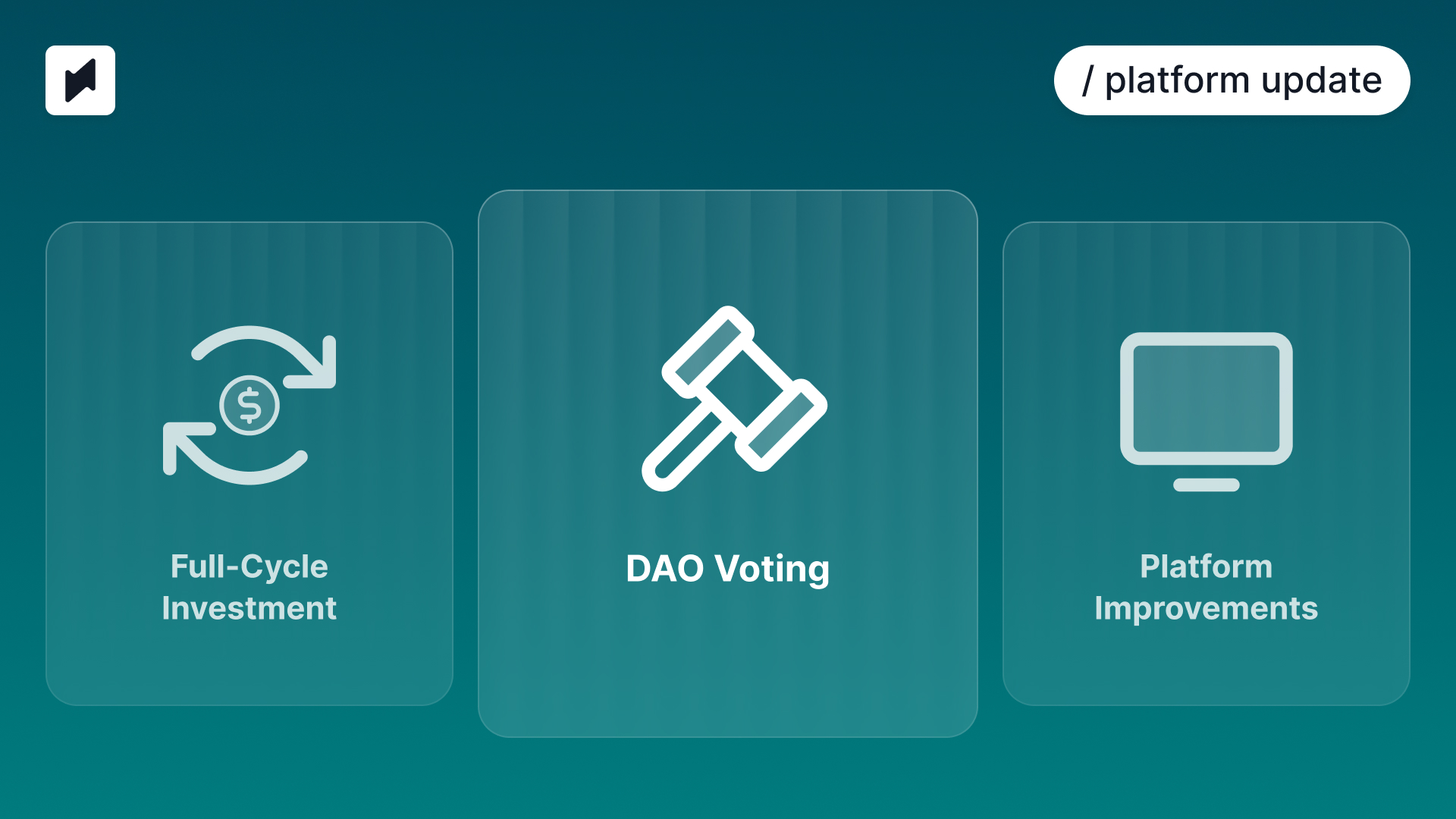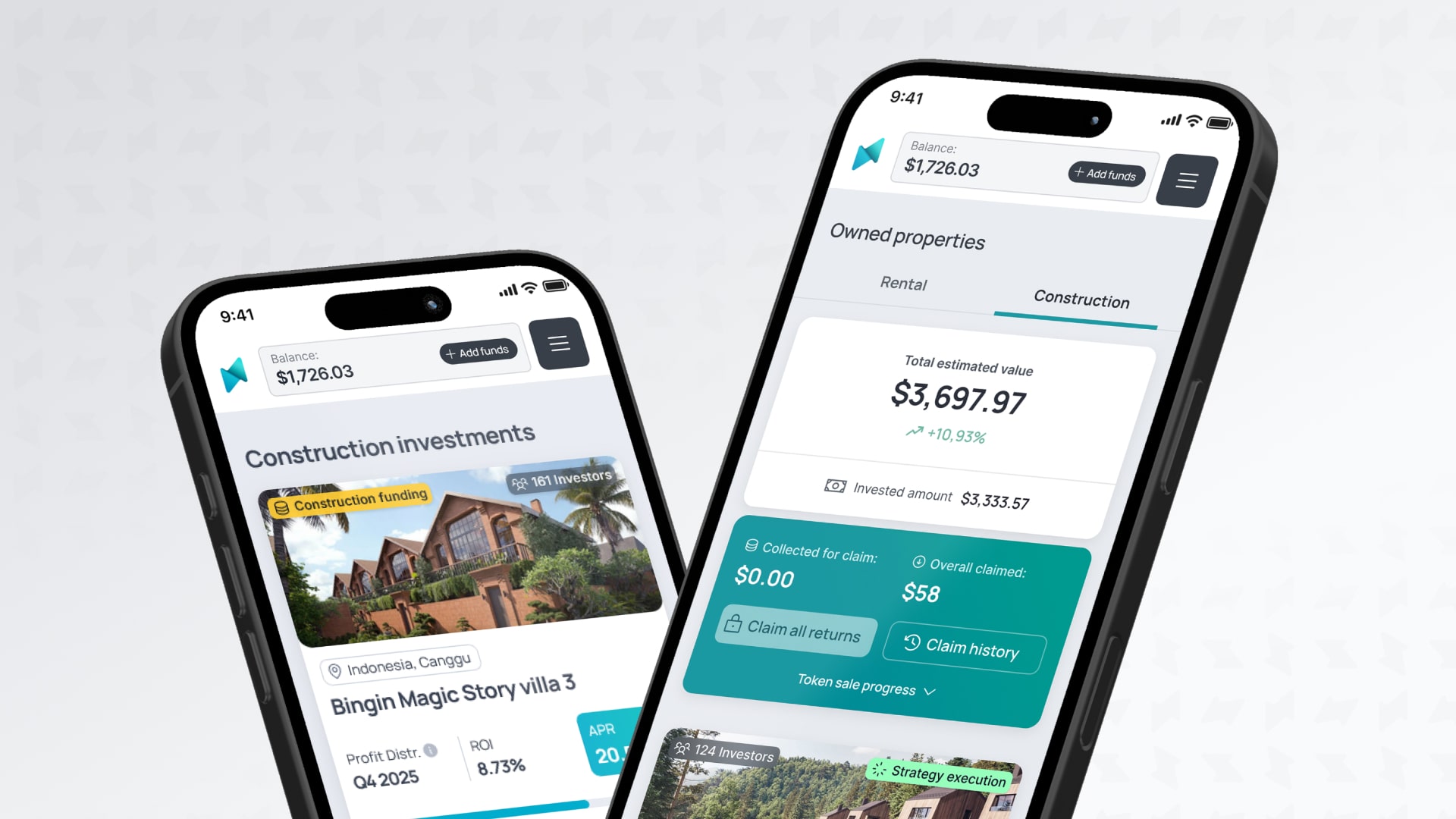Invest in Real Estate Online: From Marketplaces to Tokenization

Today's world is changing fast, and almost everything is moving online—even things that were once seen as too traditional to change. For centuries, real estate has been one of the most conservative investment options. But now, even real estate is transforming, embracing the digital shift and exploring new opportunities online. This article will show you how to invest in real estate online without the usual hassles, so the process is simple and easy to follow.
Problems with Traditional Real Estate Investing
Traditional real estate investing presents major obstacles, often deterring potential investors from even starting. The high upfront costs, the difficult loan approval process, the challenge of cashing out, and the headaches of being a landlord all make property investment tougher than it needs to be. Below are some of the biggest challenges:
- High Upfront Costs: The main barrier to real estate investment is the high capital needed upfront. A massive down payment is required to secure the property and prove financial readiness, but it often keeps people from ever getting started.
- Headache of Loan Approvals: Getting a mortgage is rarely easy. The process is full of hoops to jump through—endless paperwork, new government regulations, and strict underwriters. It can take months and leave investors stressed out, especially if they have a negative credit history.
- Hard to Cash Out: Real estate isn’t a liquid investment. It takes months to sell a property and involves loads of fees and paperwork. If you need quick cash, selling your property won’t be a fast solution.
- Landlord Struggles: Managing a rental property is no joke. From dealing with difficult tenants to handling constant maintenance issues and vacancy costs, being a landlord is a lot more work than many anticipate. Government-imposed rent control can also limit profits, adding to the frustration.
- Slim Chance of Diversification: Diversifying in real estate means buying more properties, which requires more money and more loans. For most people, creating a diverse real estate portfolio just isn’t practical given the high financial demands.
Online Real Estate Investing: A Modern Solution
Online real estate investing makes property investments easier and more accessible through digital platforms. These platforms tackle many of the common issues with traditional real estate. You can diversify more easily by putting smaller amounts into different properties instead of committing to just one big investment. The whole process is more straightforward — transactions are faster, cheaper, and more liquid, with no need to deal with property management headaches. With improved accessibility and a wide selection of assets, almost anyone can get into real estate investing, no matter their budget or location. Each online platform can handle some tasks better than others, so let's dive into the different ways of online real estate investing.
Ways to Invest in Real Estate Online
Real Estate Marketplaces
Real estate marketplaces are transforming the way we buy property by making the process digital and straightforward. The property itself remains the same, but the experience of buying and transferring titles is streamlined and more accessible. You can now browse properties, make purchases, and handle the paperwork all online. It’s an easier way to get into the classic real estate market without the usual complications.
Real Estate Investment Trusts (REITs)
Real Estate Investment Trusts (REITs) allow you to invest in income-generating properties without actually buying them. These trusts own and operate properties like apartments, malls, and warehouses, and you can buy shares to earn a portion of the rental income they generate. It’s a great option if you want passive income and don’t want the hassle of managing properties yourself. The income often comes in the form of regular dividends, making REITs a solid choice for anyone looking for consistent cash flow.

Real Estate Mutual Funds and ETFs
Real estate mutual funds and ETFs work a lot like REITs, but they’re made up of a mix of different real estate-related assets. These funds might include REITs, stocks of property companies, bonds, and more. The goal is to diversify across various types of real estate investments. It’s a very hands-off way to invest and usually comes with modest returns, making it a good fit if you’re looking for something conservative and easy.
Real Estate Crowdinvesting
Crowdinvesting platforms let you invest in large-scale real estate projects by pooling your funds with other investors. This allows you to get involved in developments or property purchases that would be out of reach on your own. A professional management company or the platform itself handles the property, so you just sit back and collect any potential income. It’s a chance to access bigger opportunities and earn returns without taking on all the work yourself.

Tokenized Real Estate
Tokenization divides a property into digital tokens, each representing a share of ownership. You can buy, sell, or trade these tokens on a blockchain, making it easy to get in and out of investments. Tokenization offers a highly liquid and globally accessible way to invest, with rental income and resale profits distributed automatically through smart contracts. It’s a modern take on real estate that offers convenience and transparency.

Virtual Real Estate (Metaverse)
Virtual real estate exists entirely within digital environments called the metaverse. This kind of property investment involves buying virtual land or buildings, which can be used for gaming, advertising, or creating unique experiences. Platforms like The Sandbox and Decentraland made headlines with these virtual assets, and while the hype has cooled, the potential is still there. With advancements in VR and AR, virtual real estate could see big growth, but it’s a riskier investment that requires careful consideration.

How Tokenization Unlocks the Potential of Online Real Estate Investing
Tokenization is opening up real estate to a new kind of investor—those who want the benefits of owning property but without the hassle of managing it. Imagine investing in prime properties around the world, not by buying entire units but by purchasing digital tokens that represent a share of ownership. These tokens are secured on the blockchain and come with all the associated rights, like receiving rental income or benefiting from value appreciation. The magic here is the ability to invest without worrying about property maintenance or tenant issues—everything is taken care of by the platform.

Unlike traditional real estate investing, tokenization makes it possible to start small. Instead of saving up for years to buy an entire property, you can purchase just a fraction of one, allowing you to diversify across different markets with less capital. Want a piece of a beachfront villa in Bali and a slice of a chalet in Montenegro? With tokenization, you can do both without breaking the bank. And because blockchain keeps everything transparent, investors know exactly what they own and can trade their tokens whenever they want—adding liquidity that's often missing in real estate.
Tokenization also simplifies the entire process, making it faster and more cost-effective. Forget about cumbersome paperwork, middlemen, or complex legal processes. Thanks to smart contracts, everything’s automated—from ownership transfers to rental income distribution. Plus, you get the added security of blockchain technology, which ensures that every transaction is verified and recorded immutably. All this means more time enjoying your investment and less time navigating bureaucracy.
Case Study: Online Real Estate Investing Through Binaryx
Let’s see how you could build a balanced real estate portfolio using Binaryx with an initial investment of $20,000. By splitting the funds evenly across different properties, you can achieve a blend of passive income and high returns while diversifying your risk.
- $5,000 in Kammora Living Rental Villa in Bali: This rental property offers a 10.5% annual percentage return (APR). With an initial investment of $5,000, you could earn $525 in the first year.

- $5,000 in Hayat Green Tower in Antalya, Turkey: This property guarantees an 8% rental return. With $5,000 invested, your first-year income would be $400.

- $5,000 in Mountain Retreat by Dukley in Montenegro: This is an off-plan construction investment with a projected return on investment (ROI) of 13.66%. With $5,000 invested, you could expect a return of $683 in the first year, with the exit planned for Q1 2025.

- $5,000 in Nexa Sky Garden Construction Investment in Bali: This construction project is expected to generate around 19% ROI upon completion, with an exit planned for late 2025. Over a year, your $5,000 investment could grow by $950.

In the first year, your total return on the $20,000 investment would be $2,558, combining steady rental income with the potential for high gains from construction projects. This diversified approach helps spread risk while still aiming for both immediate cash flow and longer-term appreciation.
Challenges to Overcome When Investing in Real Estate Online
- Platform Reliability: Not all platforms are created equal, and some may not have the credibility needed for large investments. It's important to thoroughly research the platform’s track record, read reviews, and look for regulatory approvals before committing your money.
- Overall Security Concerns: Online real estate investments come with cybersecurity risks. Choose platforms that use strong encryption, secure payment gateways, and two-factor authentication to protect your funds and personal information.
- Regulatory Considerations: Regulations vary significantly between countries, especially for online and tokenized real estate. It’s vital to understand the legal aspects, including tax consequences and ownership rights. Consulting with a legal professional can help mitigate these risks.
To mitigate these challenges, always do your due diligence on both the platform and the property, stay informed about market trends, and consult with trusted advisors when necessary.
Conclusion: Embracing the Future of Real Estate Investing Online
Online real estate investing has transformed a traditionally complex process into one that's accessible, flexible, and diverse. With options like tokenized real estate, REITs, and even virtual property, the barriers to entry are lower, and the opportunities are more varied than ever. You can now build a real estate portfolio that suits your goals, whether you're after steady passive income or long-term value appreciation—all without the headaches of property management or extensive paperwork.
If you're ready to explore these new opportunities, platforms like Binaryx make the process simple. From rental properties to construction projects, Binaryx offers a range of investment options that let you get started with as little or as much capital as you’re comfortable with. It's time to take advantage of the future of real estate and invest on your terms.









-min.jpg)

